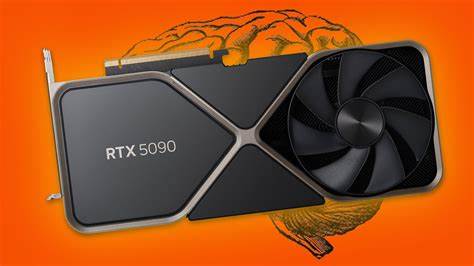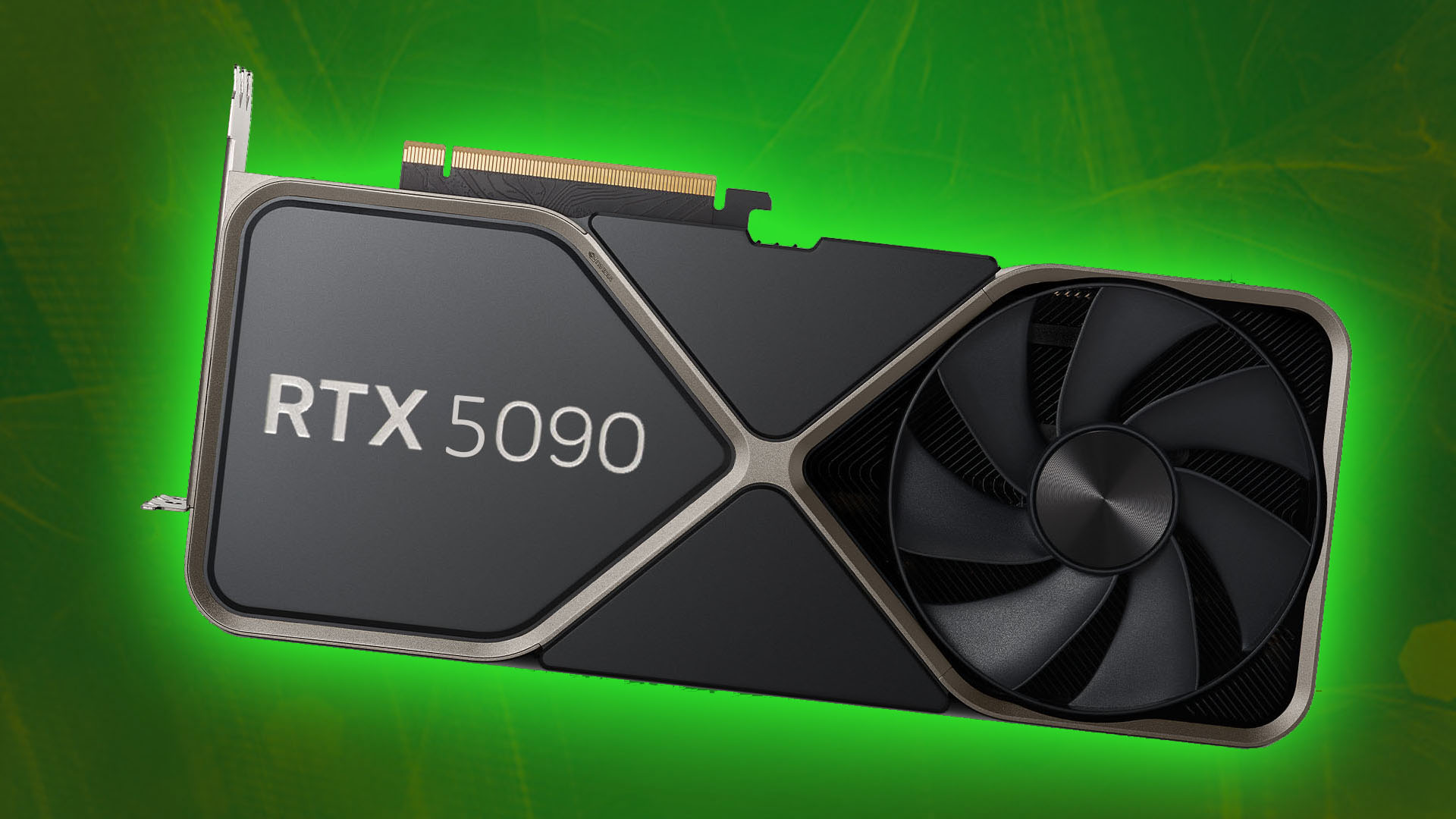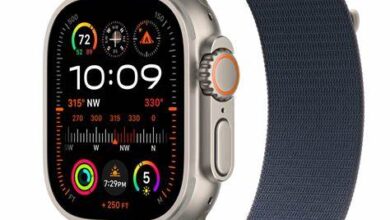
How Powerful is the RTX 5090 Compared to the RTX 4090?
Just when you thought the RTX 4090 was the undisputed king of GPUs, Nvidia decided to break the limits yet again with the RTX 5090. The RTX 5090 isn’t just an incremental upgrade—it’s a massive leap forward, boasting 50–70% more performance than the RTX 4090. If you thought 4K gaming at 120 FPS was impressive, imagine 8K gaming at ultra settings with ray tracing enabled—without breaking a sweat!
So, what makes this GPU so much better? Let’s break down how the RTX 5090 architecture, graphical capabilities, AI computing potential, and even crypto mining efficiency make it the most powerful graphics card ever built.
RTX 5090 vs. RTX 4090: Architectural Advancements
Nvidia’s RTX 5090 is built on the new Blackwell architecture, which is a massive upgrade from the Ada Lovelace-based RTX 4090. Here’s what makes the RTX 5090 a next-gen beast:
- Smaller Process Node: The 5090 is rumored to be built on TSMC’s 3nm process (compared to the 4nm process of the 4090). This means higher efficiency, better thermals, and more power in a smaller space.
- Increased CUDA Cores: Early reports suggest the RTX 5090 could pack up to 24,000 CUDA cores, a huge jump from the 16,384 CUDA cores in the RTX 4090.
- Massive Memory Bandwidth: The 5090 may use 32 Gbps GDDR7 memory, up from 21 Gbps GDDR6X in the 4090, which means faster data access and better performance in gaming and AI tasks.
- Higher L2 Cache: Nvidia has reportedly doubled the L2 cache, which significantly reduces latency and boosts performance across workloads.
- PCIe 5.0 Support: Unlike the RTX 4090, which still relied on PCIe 4.0, the 5090 embraces PCIe 5.0 for faster communication between the GPU and CPU.
How the RTX 5090 Delivers the Best Graphics Ever
If you thought gaming graphics couldn’t get any better, Nvidia’s RTX 5090 is here to prove you wrong. Here’s how it dominates in visual fidelity and performance:
- 8K Gaming at Ultra Settings: The RTX 5090 can deliver 60+ FPS at 8K resolution with ray tracing and DLSS enabled. That’s console-shaming power!
- Ray Tracing 2.0: With more RT cores and AI-assisted ray tracing, lighting, shadows, and reflections now look even more lifelike, reducing performance dips seen in previous generations.
- DLSS 4.0: Deep Learning Super Sampling (DLSS) 4.0 will take AI-based upscaling to the next level, making lower resolutions look like native 8K while boosting FPS.
- Better VR Support: If you’re into VR, this GPU can power 4K per eye at 120Hz, ensuring buttery smooth experiences in next-gen VR titles.
How the RTX 5090 Benefits Gamers
If you’re a gamer, here’s what the RTX 5090 brings to the table:
✔ Higher FPS in AAA Games – Play Cyberpunk 2077, Starfield, and Red Dead Redemption 2 at 8K ultra settings.
✔ Smoother eSports Performance – Competitive games like Valorant, CS2, and Fortnite will hit 1000+ FPS on high-refresh-rate monitors.
✔ Future-Proofed for Years – With such power, you won’t need an upgrade for at least 5–7 years.
✔ No More Bottlenecks – The new PCIe 5.0 support ensures maximum CPU-GPU performance with no bottlenecking.
Games That Will Benefit the Most from the RTX 5090
With DLSS 4.0, Ray Tracing 2.0, and a massive jump in raw power, these AAA titles and eSports games will see huge FPS gains, graphical improvements, and ultra-smooth performance.
🟢 Cyberpunk 2077: Phantom Liberty (8K Ray Tracing, DLSS 4.0, 100+ FPS)
- Current RTX 4090 Performance: Around 40–50 FPS in 4K with full ray tracing enabled.
- RTX 5090 Boost: Expect 60+ FPS in full 8K with Ray Tracing: Overdrive Mode enabled.
- Why it matters: This game is one of the most graphically demanding ever, and with DLSS 4.0, it could look better than real life while running at playable frame rates in 8K.
🔵 Starfield (4K Ultra, Stable 144Hz on High Refresh Monitors)
- Current RTX 4090 Performance: Drops to 50–60 FPS in dense city areas (like New Atlantis).
- RTX 5090 Boost: 100+ FPS at 4K Ultra settings, smoother gameplay even in CPU-heavy areas.
- Why it matters: Bethesda’s massive RPG struggles with optimization, but the RTX 5090’s increased L2 cache and AI frame generation will eliminate stutters and FPS dips.
🟣 Microsoft Flight Simulator 2024 (Smooth 8K and Better CPU-GPU Efficiency)
- Current RTX 4090 Performance: Struggles to maintain 60 FPS at 4K Ultra with max settings.
- RTX 5090 Boost: 60+ FPS at 8K resolution with smoother terrain rendering.
- Why it matters: Flight Sim 2024 is extremely CPU and GPU heavy, but the RTX 5090’s better PCIe 5.0 support ensures zero bottlenecks, making long-distance rendering far smoother.
🔴 The Witcher 3: Next-Gen Update (Ray Tracing + DLSS 4.0 for 100+ FPS in 4K)
- Current RTX 4090 Performance: Around 70-80 FPS in 4K with full ray tracing.
- RTX 5090 Boost: 100+ FPS at 4K Ultra Ray Tracing with DLSS 4.0.
- Why it matters: The next-gen update added amazing visuals, but ray tracing tanks performance. The RTX 5090 will make it run smoothly at high frame rates.
🟡 Call of Duty: Modern Warfare III (Ultra Settings, 300+ FPS in 1440p, DLSS 4.0 at 4K 240Hz)
- Current RTX 4090 Performance: 150–180 FPS at 1440p Ultra, 100+ FPS at 4K.
- RTX 5090 Boost: 300+ FPS at 1440p, 180–200 FPS at 4K with DLSS 4.0.
- Why it matters: Competitive gamers will love the higher frame rates, and with DLSS 4.0, 4K 240Hz gaming is finally achievable.
🟠 Grand Theft Auto VI (2025) (Next-Gen Open-World at 4K/8K 120 FPS)
- Current RTX 4090 Performance: Unknown, but expected to be demanding.
- RTX 5090 Boost: 8K gaming possible, smooth ray-traced reflections, and ultra-high draw distances.
- Why it matters: Rockstar’s next-gen open-world game will have insane details, and the RTX 5090 ensures no compromise on visuals or performance.
AI Computing: The RTX 5090’s Role in Machine Learning
The RTX 5090 isn’t just for gaming—it’s an absolute monster for AI computing and deep learning. With more Tensor Cores, FP8 acceleration, and higher memory bandwidth, expect it to outperform even Nvidia’s current data center GPUs for some workloads.
- Faster AI Model Training: Train LLMs (like ChatGPT) and Stable Diffusion models 2x faster than the RTX 4090.
- Better AI Image & Video Processing: Run AI upscaling, deepfake software, and video editing at record speeds.
- More Efficient AI Workflows: AI developers and researchers will see up to 70% improved performance in applications like TensorFlow, PyTorch, and Stable Diffusion.
Is the RTX 5090 Good for Crypto Mining?
Mining Ethereum and Bitcoin on GPUs might be fading, but altcoins like Kaspa and Ergo still benefit from powerful GPUs. The RTX 5090’s 3nm efficiency and increased CUDA cores could make it a solid choice for mining operations.
However, keep in mind:
- High Power Consumption: Estimated at 450-500W, similar to the 4090.
- Nvidia’s Anti-Mining Measures: Nvidia may include Lite Hash Rate (LHR) restrictions again.
- More Profitable in AI Than Mining: With AI computing becoming more lucrative, many users may prefer using the 5090 for AI workloads over crypto mining.
RTX 5090 Price: What’s the Damage?
Expect to pay a hefty price for the RTX 5090. Here’s a breakdown of potential pricing:
- RTX 5090 FE (Founders Edition): Estimated $1,699 – $1,999
- Third-Party AIB Variants: Expect MSI, ASUS, and Gigabyte models to go over $2,000 for liquid-cooled or overclocked versions.
However, once demand stabilizes, the RTX 5090 could settle around $1,600–$1,800 in the long run.
Best Budget Processor to Pair with the RTX 5090
Pairing a weak CPU with the RTX 5090 is a crime—you need a processor that can keep up with its insane speed. Here are some of the best options:
- Best Performance CPU: AMD Ryzen 9 9950X or Intel Core i9-14900K
- Best Budget CPU: AMD Ryzen 7 7800X3D (best value for gaming) or Intel Core i7-14700K
- Best Workstation CPU: Threadripper 7995WX (if you’re using it for AI or professional workloads)
If on a budget, the Ryzen 7 7800X3D is a great pick—it balances price and performance while avoiding bottlenecks.
How Much RAM Do You Need for the RTX 5090?
For the best performance, here’s how much system RAM you should have:
- Minimum: 32GB DDR5 (for gaming)
- Recommended: 64GB DDR5 (for high-end gaming and AI tasks)
- Professional Use: 128GB DDR5+ (for AI, machine learning, and 3D rendering)
With 32GB DDR5, you’ll be fine for gaming, but if you’re doing AI computing or professional work, 64GB or even 128GB is ideal.
Final Thoughts: Should You Upgrade to the RTX 5090?
If you’re still using an RTX 3090 or lower, upgrading to the RTX 5090 is a no-brainer. However, if you already have an RTX 4090, you may only see 50-70% gains—which is impressive, but not always worth spending another $2,000 on.
✔ Upgrade if you want the best GPU for gaming, AI computing, or professional work.
✔ Skip if your RTX 4090 is still handling everything you need.
Would you buy the RTX 5090, or are you waiting for even crazier hardware? Let me know in the comments! 🚀🎮






This post is transformative! Speaking of transformation, Sprunki Phase transforms art.